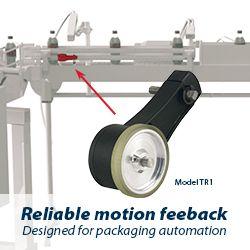RV reducers provide extremely high rigidity, precision, and torque while maintaining a compact size and exceptional reliability, making them an ideal match for the demanding requirements of walking robot joints in terms of load capacity, impact resistance, and precision.
High-Precision RV Reducers Perfectly Matched for Walking Robots
Article from | HONPINE
The walking axis of a robot is a core component for power transmission and support. RV reducers provide extremely high rigidity, precision, and torque while maintaining a compact size and exceptional reliability, making them an ideal match for the demanding requirements of walking robot joints in terms of load capacity, impact resistance, and precision.
What is a Robot Walking Axis?
The robot walking axis, also known as a robot ground rail, external robot axis, or seventh robot axis, is primarily used to move industrial robots along specified paths, expanding their operational range and functionality. It allows multiple devices to be integrated into this linear system, enhancing the efficiency of robot usage. Robot walking axes are widely used in industries such as painting, welding, material handling, palletizing, casting, machine tool loading and unloading, smart warehousing, automotive, and aerospace. Driven by servo motors and ultimately transmitting power through gears, robot walking axes offer high repeat positioning accuracy, fast response, smooth operation, and high reliability.
Background of the Need for Robot Walking Axes
Most industrial robots have 3 to 6 degrees of freedom, with the wrist typically having 1 to 3 degrees of freedom. The drive system includes power devices and transmission mechanisms to enable the corresponding movements of the execution??. The control system issues command signals to the drive system and execution?? based on input programs and manages their operation. Using industrial robots for machining parts in production can significantly reduce costs. Traditional industrial robots are fixed-base six-axis robots, which often fall short when processing larger parts. As a result, robots equipped with external walking axes have emerged to meet this need.
Why Are the Joints of a Robot Walking Axis So Important?
The walking axis of a robot (such as the hip and knee joints of legged robots or the drive axles of large AGVs) is a core component for power transmission and support. It must support the entire weight of the robot and generate sufficient driving force during movement, climbing, or load-bearing. During operation, the walking axis must also handle various impacts from uneven terrain. Both industrial and special-purpose robots require long-term continuous operation, making joint reducers critically important for ultimate reliability and durability.
Why Use RV Reducers?
RV reducers are precision reducers that combine planetary gear transmission with cycloidal pinwheel transmission. This structure gives RV reducers extremely high rigidity and impact resistance, with virtually zero backlash. By achieving two-stage reduction within a compact space, RV reducers provide very high reduction ratios for customers. Additionally, their rolling contact design minimizes friction loss and slow wear, resulting in an exceptionally long service life.
The high-speed, high-rigidity, and low-vibration characteristics of HONPINE RV reducers make them perfectly compatible with robot walking axes. They enhance the speed of the robot walking axis, reduce vibration, and improve precision.
The content & opinions in this article are the author’s and do not necessarily represent the views of RoboticsTomorrow
HONPINE
HONPINE is a leading supplier of harmonic reducers, RV reducers, robot joint motors, harmonic drive motors, and harmonic rotary actuators. Utilizing advanced manufacturing techniques, we have been providing precision transmission solutions since 2018. Our high-precision gearboxes have been exported to over 50 countries and have received excellent market feedback.
More about HONPINE
Featured Product

